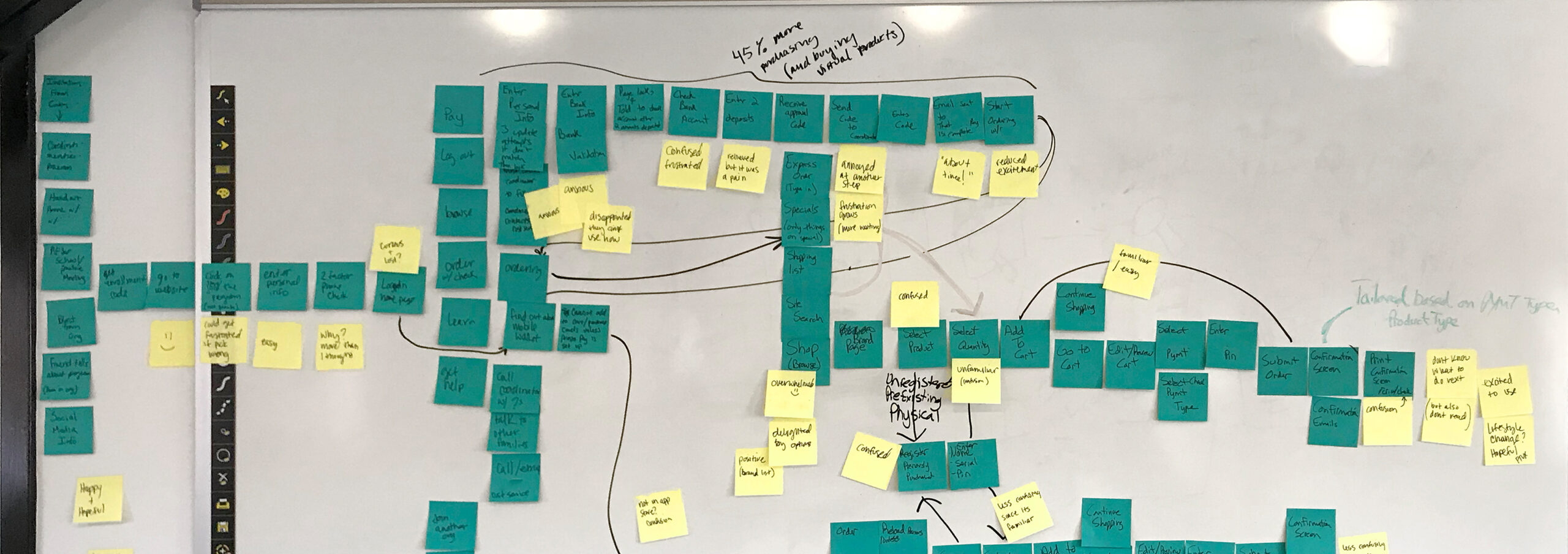
Customer experience (CX) strategies should be built to evolve just as rapidly as customer demands and expectations. As such, these initiatives should have the flexibility to perform on a multi-channel level by meeting customers where they are.
In a Salesforce survey, 74% of customers noted they have used multiple channels to start and complete a transaction — but if you don’t know where your customers are spending their time or what they expect from your brand, you won’t be able to provide them with a fully integrated experience.
So, how do you get there?
Cue customer journey mapping.
Journey mapping helps you gain a deeper understanding of your target audiences and what they expect. This insightful map allows you to more readily identify needs, pain points, and opportunities throughout the entire buying journey, from the awareness phase to the post-purchase phase.
Benefits from the process include things like reduced wait times, improved customer support, streamlined and automated processes, and higher customer satisfaction and retention.
What is a customer journey map?
If you’ve ever built a CX strategy, chances are you can skip this section — but if you’re just getting started with your CX framework or it’s been a while since you’ve put your initial plan into place, take heed. Customer journey maps are a critical component of any successful customer experience strategy, driving and delivering the most effective and relevant solutions for your target audiences.
Yet, Gartner found that just “30% of organizations have established their customer journey maps and still struggle to use them effectively.” However, the same research also proves companies that use journey maps effectively as part of their overall CX efforts exceed or meet customer expectations.
While there are several reasons behind the inability to successfully incorporate these maps into the overarching CX program, it’s imperative that business leaders course correct. “Journey maps that lack governance and oversight can undermine even the best maps’ ability to drive action,” Gartner notes.
How to use a customer journey map
Customer journey maps should focus on understanding your target audiences and pinpointing areas where you can integrate and amplify their experiences.
Here are some initial steps to effectively use a customer journey map:
- Have clear objectives and stick with them: Once you’ve identified the stages of your customers’ journey, list out different touch points and phases including awareness, consideration, purchase, and post-purchase.
- Collect data: Even after your initial map has been created, continue gathering information about your customers’ experiences at each stage, including feedback, surveys, social media/website analytics.
- Build a visual map: Chart your newly discovered territory with a visual story of the customer journey. The visual itself will depend on your company preferences, but some common forms for journey maps include flowcharts and infographics.
- Take action: Use the insights to make changes to your product or service that will improve the customer experience. Depending on resources, you can start with the low-hanging fruit and expand from there.
- Monitor and update: Continuously monitor your customers’ behavior and keep your map updated to align with demand and expectations. This will ensure that your business is evolving with your buyers.
When to deploy a customer journey map
Whether you’re launching a new product or service or going through a company rebrand, a customer journey map is a key component to help you understand what will and won’t work for your core audiences. Over time, it can also help you build a multi-channel presence which can help fuel customer loyalty and trust.
Above all, to best understand your customers and ensure your entire team is aligned to the same CX vision, journey mapping is a non-negotiable. Not only will you be able to meet people where they are, you’ll be equipped with the ability to easily evolve your strategy to keep up with rapidly changing customer demands and expectations.
Want to learn more about how Brightly can help you with your customer experience strategies?

